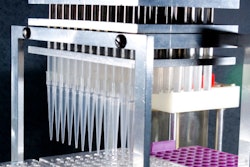One thing Arnie hated to do is provide coverage of packaging technologies when they were still in the pre-commercial stage. “Too many mad scientists out there,” he’d say. He thought it better to let the marketplace “endorse” a new technology on a commercial basis before writing about it.
I’m sure it’s imprudent to ignore the advice of a guy who’s been inducted into the Packaging Hall of Fame. But a couple of new package decorating technologies I’ve been reading about lately are so intriguing and have so much potential, I thought I’d sidestep Arnie’s rule for once and touch on them now even though they aren’t exactly commercial hits.
The first, from a startup out of Ireland called Ntera, is a part of that fascinating field known as printed electronics. Called NanoChromics display (NCD) technology, it’s an application of nanotechnology that makes it possible to mass produce electronic displays on a wide variety of packaging substrates at low cost and with minimal power requirements. Picture a package made of paper or plastic whose graphics, rather than being static images created by ink on a substrate, are dynamic and interactive displays. That’s what NCD technology aims to deliver.
According to Ntera, an NCD display can be printed with industry-standard screen printing, flexo, or ink-jet printing equipment. The technology is based on something called “electrochromism,” where materials change color when a charge is applied. Ntera refers to the new technology as an example of “printegration,” where a display, a sensor, and a charge-storing layer are integrated by way of successive layered printing steps.
Vizworld.com, a Web site for those who need to stay current with the latest in computer graphics and visualization, says this about NCD technology. “The world changed dramatically when Gutenberg first put words into print and made mass media affordable. Ntera is emulating this with next-generation, cost-effective integrated displays. Today, the printed word is about to regain the dynamic ability to change the world all over again.”
Elsewhere in the world of graphics and packaging comes news that thermoform in-mold labeling (T-IML) may be making a push. Makers and buyers of thermoformed polypropylene yogurt or ice cream containers would love to see such a technology perfected for a number of reasons. First, IML integrates decorating directly into the forming process, a more efficient and cost-effective method than the use of pad or offset printing, shrink-sleeve labels, or pressure-sensitive labels, all of which require secondary operations. Second, from a sustainability standpoint, when a label is molded into the sidewall of a container, it adds stiffness and strength; this could open up opportunities for lightweighting. And third, if the label is the same material as the container, IML would also present some potential recycling advantages over paper labels.
But thus far several unmet challenges have kept T-IML from having any real acceptance in the marketplace. Issues revolving around label adhesion, reduced cycle time, air bubbles getting trapped beneath the labels, and label shrinkage due to the heat of the forming process—these have all been problematic. Until now. Recent reports, including two presentations at the March 18-19 Form-Pack 2010 World Conference on Thermoformed Packaging, suggest that cycle speed can be greatly increased through the use of tilting-mold technology, which provides greater accessibility and easier label placement. Servo-driven robotics is also being used more effectively than ever, and this, too, will drive cycle speeds higher. And finally, new developments in label materials for T-IML are addressing problems with shrinkage, blistering, and adhesion problems.
Nanochromics and T-IML—two emerging technologies to keep an eye on if you have an interest in package decoration.






















